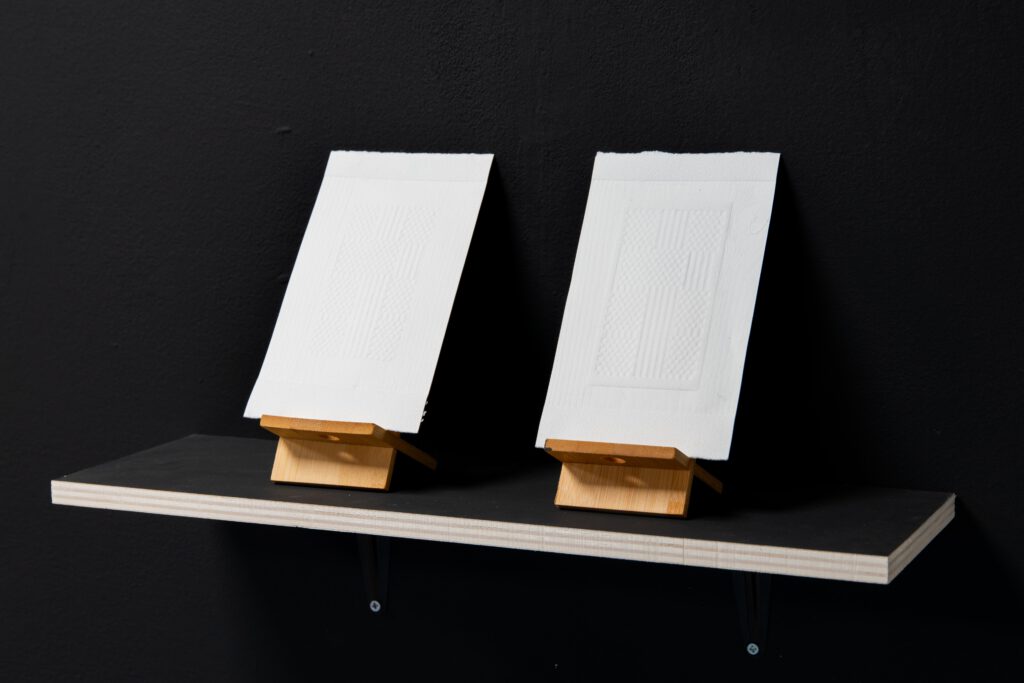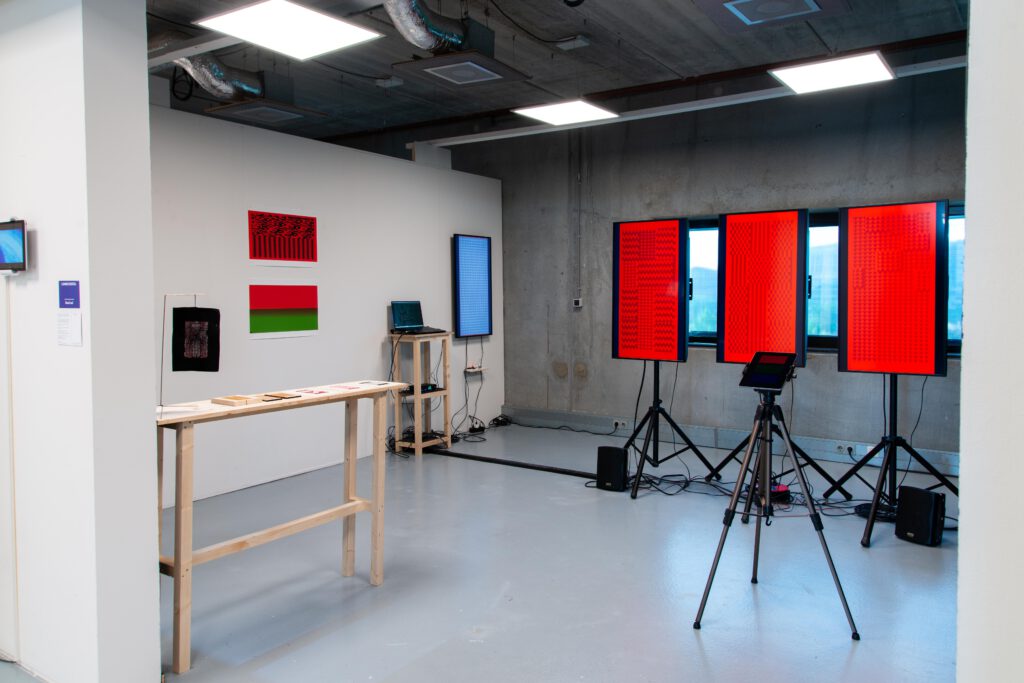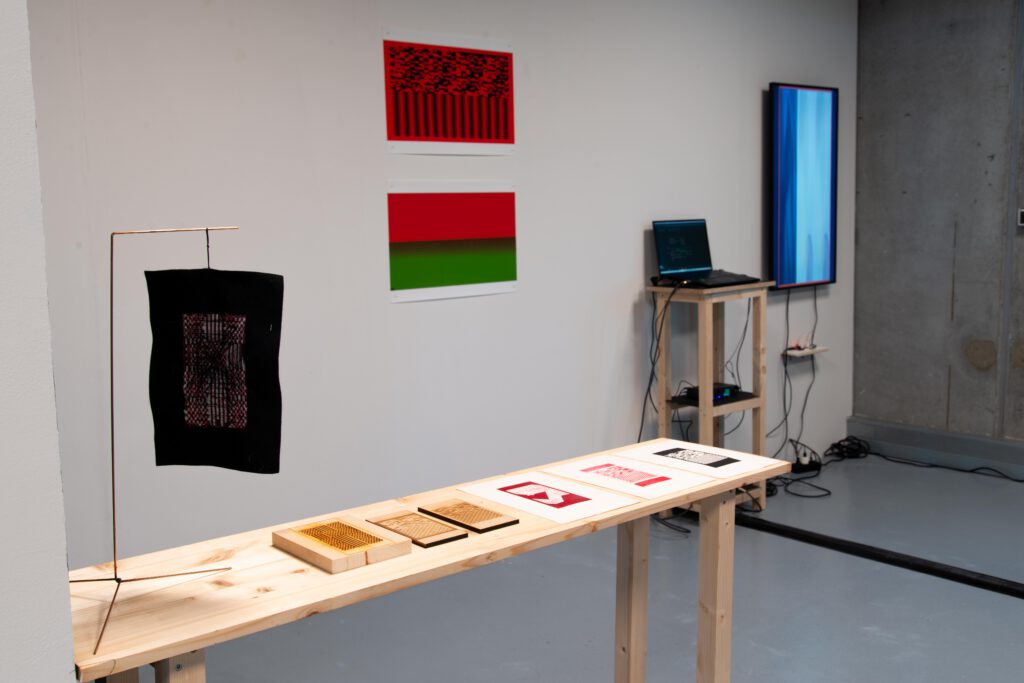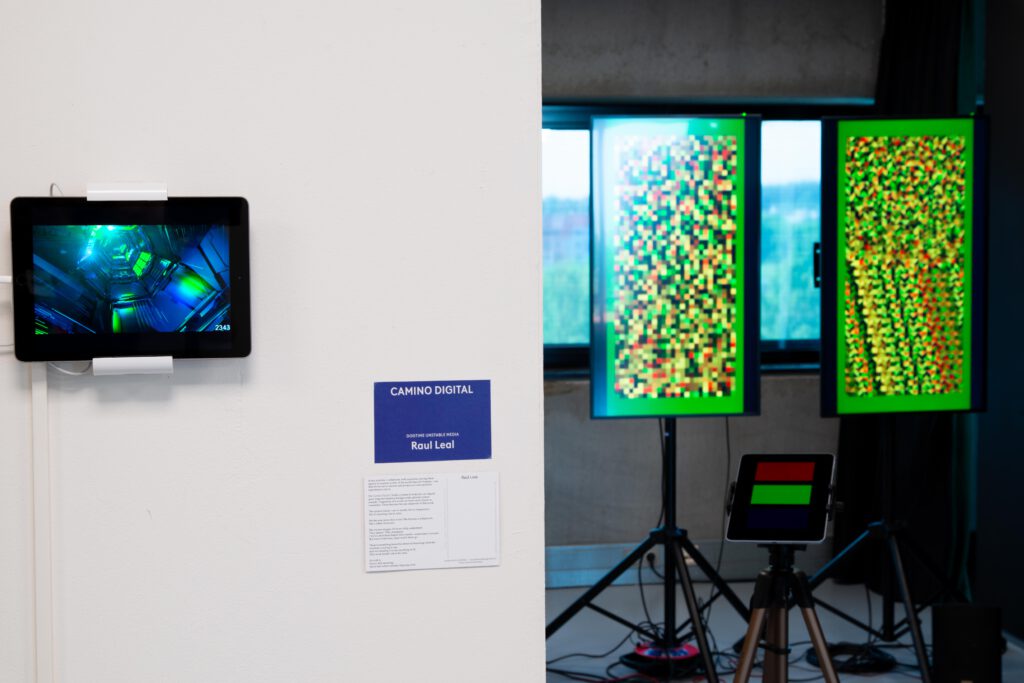Camino Digital
Graduation project at the DogTime program of the Gerrit Rietveld Academy

The Beginning
Camino Digital is a generative artwork that explores the forgotten aesthetics of our digital past reimagined through the perspective of machines. The work is a collaboration between artist Raul Leal and a custom-built system named Annivera.
It builds on the tradition of weaving and reinterprets it through digital processes. The project transforms digital memory into contemplative visual experiences that appear and disappear in an instant.

Annivera acts as a digital weaving machine. It processes images into ephemeral “Digital Pictorial Weavings,” where the transitions between images are as meaningful as the images themselves. In video documentation, one sees the constant flux of the generative system digital images weaving themselves, failing, mutating, and re-emerging.


a look into Digital History
The archive consists of the entire collection of default desktop wallpapers ever produced, spanning from Windows 3.0 and early Macintosh to contemporary Mac, Windows, and Samsung devices; that is more than 3,500 images. Once unavoidable in daily life, these defaults became so familiar that they disappeared from conscious perception. Today, they return as silent witnesses of shifting technological eras, brought back to life through Annivera’s generative process.
By working with defaults, Camino Digital reflects on the history of technology and its visual culture. These images were designed to be neutral backdrops for productivity, yet they quietly shaped collective memory across decades. Recasting them into new forms reveals the emotional and cultural weight of what was once invisible. Moreover, they are presented in the now-standard 16:9 portrait format, the images also reflect on how our visual world has been standardized by devices. Just as earlier defaults shaped collective memory, today’s widescreen ratio has itself become a new default. Camino Digital uses this frame to ask how such technical conventions shape not only design but also memory and experience.
Beyond its intrinsically digital form, Camino Digital asks: how do we inhabit the time of technology? Fleeting digital compositions are translated into physical versions — through embroidery, embossing, printmaking, or woodcutting — exploring whether materiality can resist digital temporality.
Some pieces resist photography altogether, echoing Anni Albers’ notion of “material as metaphor,” while others invite viewers to interact with Annivera, making the system a visible collaborator.
Camino Digital is a crossover between modern digital practices and traditional craft, and between human memory and machine time. It embodies the interdisciplinary ethos of my practice: conceived digitally, in the nights of DogTime, yet shaped across workshops from CAD/CAM, printmaking, and X-Lab, to textile, wood, and metal studios.
Human-Machine Collaboration
Yet, Annivera exhibits unpredictable glitches. Instead of breaking or halting, the system demonstrates a resilience that feels almost like an instinct for self-preservation. In these moments, Annivera often generates fleeting
images—fragile and luminous—that vanish as quickly as they appear, like tears in the rain. Rather than correcting these anomalies, I chose to embrace them, allowing the glitches to imbue Annivera with a distinct and unpredictable personality.
Drawing on Vera Molnar’s systematic approach to computer art, I selected several configurations as milestones, allowing Annivera to navigate the
space between them autonomously. This interplay between me and system blurs the boundaries of authorship, resulting in generative works that transcend intention while retaining a sense of purpose.
from Digital to physical
The physical pieces in Camino Digital reflect my deep fear of losing these ephemeral digital images, preserving what might otherwise disappear forever—moments as transient and fragile as the glow of distant stars fading into twilight. Rooted in Albers’ notion of “material as a metaphor,” these tangible works echo their digital origins. Some, crafted through embossing
techniques, resist photographic reproduction and exist solely for direct, physical engagement.
Gerrit Rietlveld Academy Gradution show
In this presentation, Annivera takes on an interactive, performative role,
moving between points of interest I define and responding to music from the
Ghost in the Shell films and the game Nier: Automata. This dynamic
interaction embraces the fleeting nature of the images while inviting viewers and contemplate. Together, Annivera and I weave a dialogue
between human and machine, shaping a collaborative exploration that
brings these visions to life.
to engage
